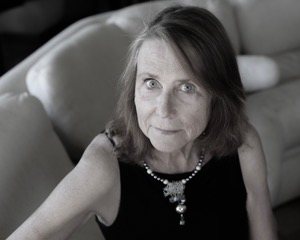Mary Pacifico Curtis is a Silicon Valley entrepreneur, seasoned branding and PR professional, and author of poetry and non-fiction. Published work includes her recent memoir, Understanding Moonseed, two poetry chapbooks, Between Rooms and The White Tree Quartet and numerous pickups in literary magazines and anthologies. Hawk’s Cry is her first full-length poetry collection.
Accolades include recognition as a 2012 Joy Harjo Poetry Finalist (Cutthroat Journal), 2019 Poetry Finalist in The Tiferet Journal, non-fiction finalist in The 48th New Millenium Writings contest and a 2021 non-fiction finalist in The Tupelo Quarterly Open.
At 24, she founded Pacifico, Inc., which grew into one of Silicon Valley’s largest independently owned PR and branding firms with clients that included many global technology leaders. When both daughters went to college, she earned an MFA in 2012 in creative writing from Goddard College.
Curtis lives with her husband in the foothills of the Santa Cruz mountains on a terraced property where she grows vegetables and fends off gophers while admiring deer, coyotes, wild turkeys and the occasional bobcat.
Kristina Marie Darling: Tell us about your latest book, Hawk’s Cry, which just launched from Finishing Line Press.
Mary Pacifico Curtis: Hawk’s Cry is a collection of poems written over a decade. In all of them I found myself exploring how what we do to each other we also manifest within families, politics, cultures and even on our planet. As the book came together the poems coalesced as a call to consciousness.
KMD: Your book reads elegantly and seamlessly on the level of both language and structure. What advice do you have for poets who might struggle with sequencing their poems?
MPC: Honestly, I think sequencing poems is the single most difficult thing about putting a collection together. The problem comes down to putting poems in an order that works in bites for the reader, not just the writer. I find myself worrying about things like giving the reader breathing moments between the most intense poems. My best advice is to activate your most trusted community to surprise you with feedback on how your immediate work reads. I recently did a workshop with a very well-known poet on the topic of sequencing collections and she made it sound so easy. I’m happy for her. I find myself really agonizing over sequencing for the reader.
KMD: You have an impressive publication track record, which spans multiple genres. What can poets learn from prose writers about the art and craft of storytelling?
MPC: I used to think that poetry was a bad habit and my genre was CNF. (Let me mention also my bias that real writers write fiction which I do not so far). My ‘bad habit’ persisted when I entered grad school later in life, and my advisor told me I needed to pursue poetry. Often I still thought of myself as a prose writer but than I realized the synergy between the two. My writing friends told me my prose was so lyrical. My poetry was clearly narrative. Whatever I wrote in either genre to some point of readiness incorporated the rhythmic and musical domains where I seemed to feel most comfortable in the story of a particular moment. Perhaps I like persona poems so much because that is my fiction, a moment where I step into another character and another world.
KMD: In addition to your achievements as a poet, you are a successful entrepreneur. How has your background in business enriched your writing life? And the other side of the coin: How has writing inflected your approach to entrepreneurship?
MPC: This is an unexpected and interesting question and I hope you’ll bear with me as I think it through. Early age, I wanted to write novels (but I wrote poetry and one-act plays). Career age I entered writing ad copy and pretty quickly started my own company. I wrote ads and press releases for a few years, built my staff and moved over to management and client strategy focus. Except you can’t do that without writing proposals and plans. In other words I was always working with language and thought. And all that strategy, well, writing creatively is strategy. You have to be clear thinking. And then let go. Both have a role.
Yes, I still have an active entrepreneurial life and I took great joy just a few years ago in recreating my late husband’s integrated circuits that were the basis of the electronic music synthesizer industry in the 80’s. I know my competitive nature and I know my dreams. The challenge seems to be acceptance of both and the space to appreciate both. At this point in my life, ‘m focused on giving oxygen to my writing dreams.
KMD: What’s next? What can readers look forward to?
MPC: I have two books in progress. Ephphatha is a non-fiction prose collection and I’m proud to say that the eponymous essay was a non-fiction finalist in the Tupelo Quarterly Open a couple of years ago.
The second in progress is MYA, a working title for a poetry collection at least a year out from submittal.
KMD: Will you share a writing prompt with us?
MPC: Architecture and me. (you_) That prompt resulted in the essay ‘My Life in Architecture’ which appears in my memoir Understanding Moonseed.
Hawks-Cry-by-Mary-Pacifico-Curtis-Excerpt
